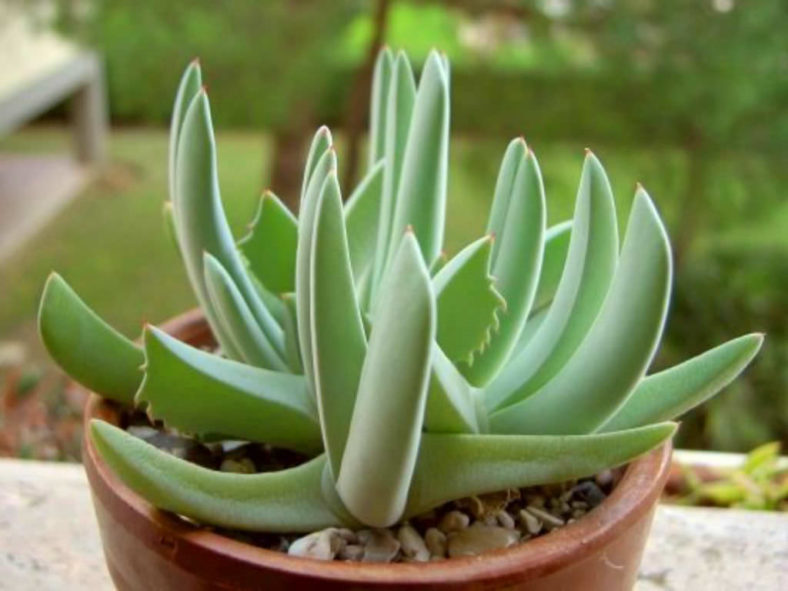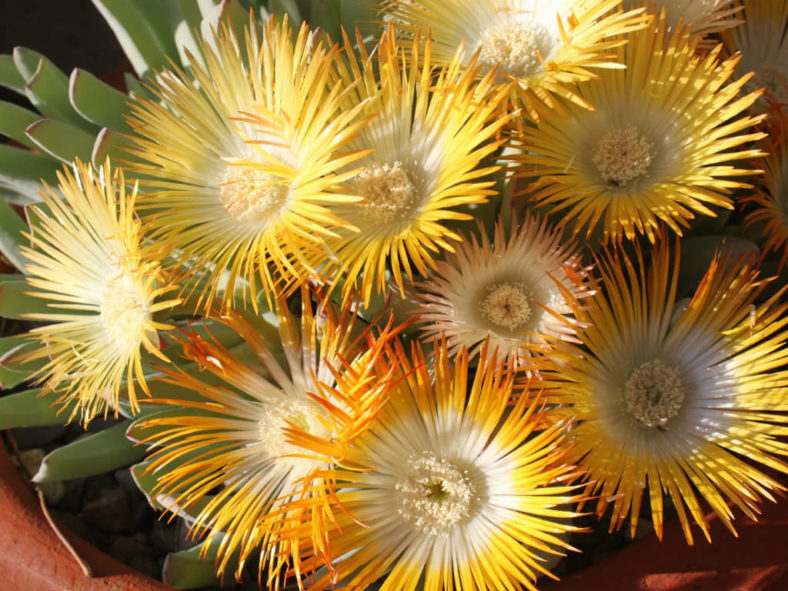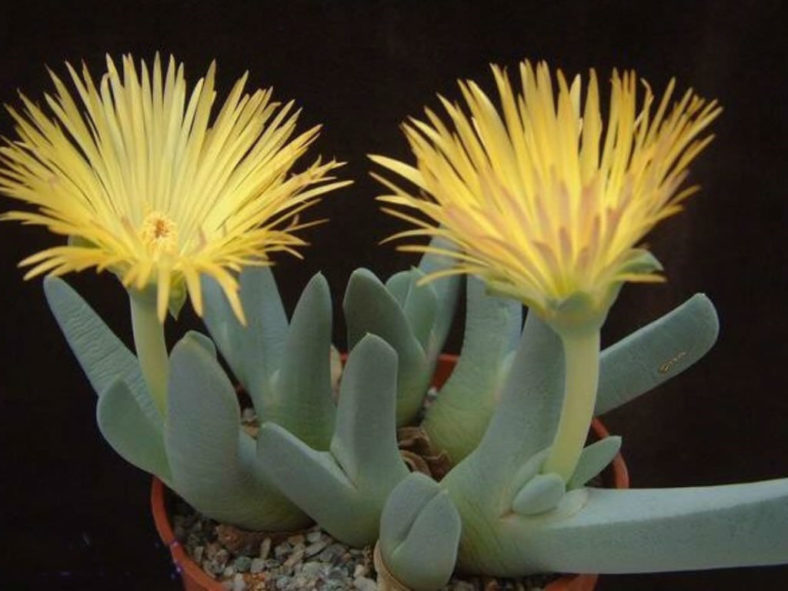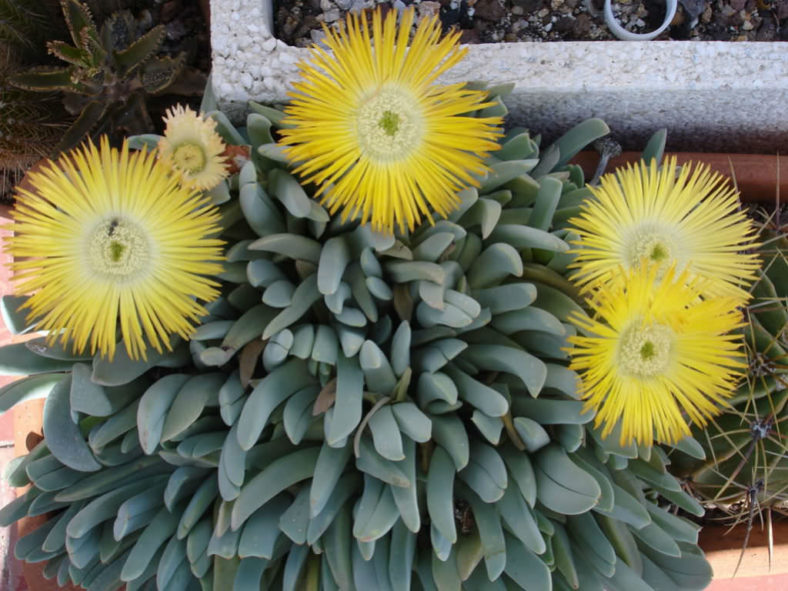Scientific Name
Cheiridopsis denticulata (Haw.) N.E.Br.
Common Name(s)
Carpet Weed, Lobster Claws
Synonym(s)
Cheiridopsis denticulata var. denticulata, Mesembryanthemum denticulatum
Scientific Classification
Family: Aizoaceae
Subfamily: Ruschioideae
Tribe: Ruschieae
Genus: Cheiridopsis
Etymology
The specific epithet "denticulata" (pronounced "den-tik-yoo-LAH-tuh") means "denticulate; furnished with small teeth" and refers to the toothed leaves of this species.
Origin
The native range of Cheiridopsis denticulata extends from Lüderitz in Namibia southwards through the Richtersveld and Namaqualand in the Northern Cape to the northern parts of the Western Cape province of South Africa. It grows on flats or slopes.
Description
Cheiridopsis denticulata is a succulent subshrub with opposite, one or two, sometimes three pairs of thick, fleshy leaves that form a gaping V, each leaf flaring to the tip and unequally toothed. It can grow up to 10 inches (25 cm) tall and 16 inches (40 cm) in diameter, forming a dense clump as it matures. The leaves are pale bluish-grey to silvery-white, never brownish, and rarely green. They are triangular in cross-section and taper to an acute tip with a tiny spine.
The solitary flowers are pale yellow to cream or white with a rosy tinge. They appear on a long, sturdy stalk in late winter, opening during the afternoon. The fruits are capsules with 12 to 20 locules, each containing whitish to brownish seeds.

How to Grow and Care for Cheiridopsis denticulata
Hardiness: USDA hardiness zones 9b to 11b: from 25°F (-3.9°C) to 50°F (10°C).
Mesembs mostly adapt to relatively predictable rainfall patterns rather than extreme drought and irregular rainfall. Total rainfall may be extremely low, but water is available at least seasonally or through fog and condensation. This leads to or allows plants that are not especially large, and sometimes very small, which affects how they need to be treated in cultivation.
The basics of care are simple: free-draining soil, plenty of sun and ventilation, and regular light watering in the right season. However, the difficulties of adapting to the Mesembs' adaptability and following their growth habits in your particular conditions are endless.
These plants require a loam-based compost with extra drainage material such as horticultural grit or perlite. They all like good light conditions and plenty of ventilation.
Some are relatively cold-hardy and can even survive mild winters outside. Most will survive temperatures down to the freezing point. Some Mesembs begin to grow in the fall as temperatures drop and days get shorter.
Learn more at How to Grow and Care for Mesembs.
Links
- Back to genus Cheiridopsis
- Succupedia: Browse succulents by Scientific Name, Common Name, Genus, Family, USDA Hardiness Zone, Origin, or cacti by Genus
Photo Gallery
Click on a photo to see a larger version.


